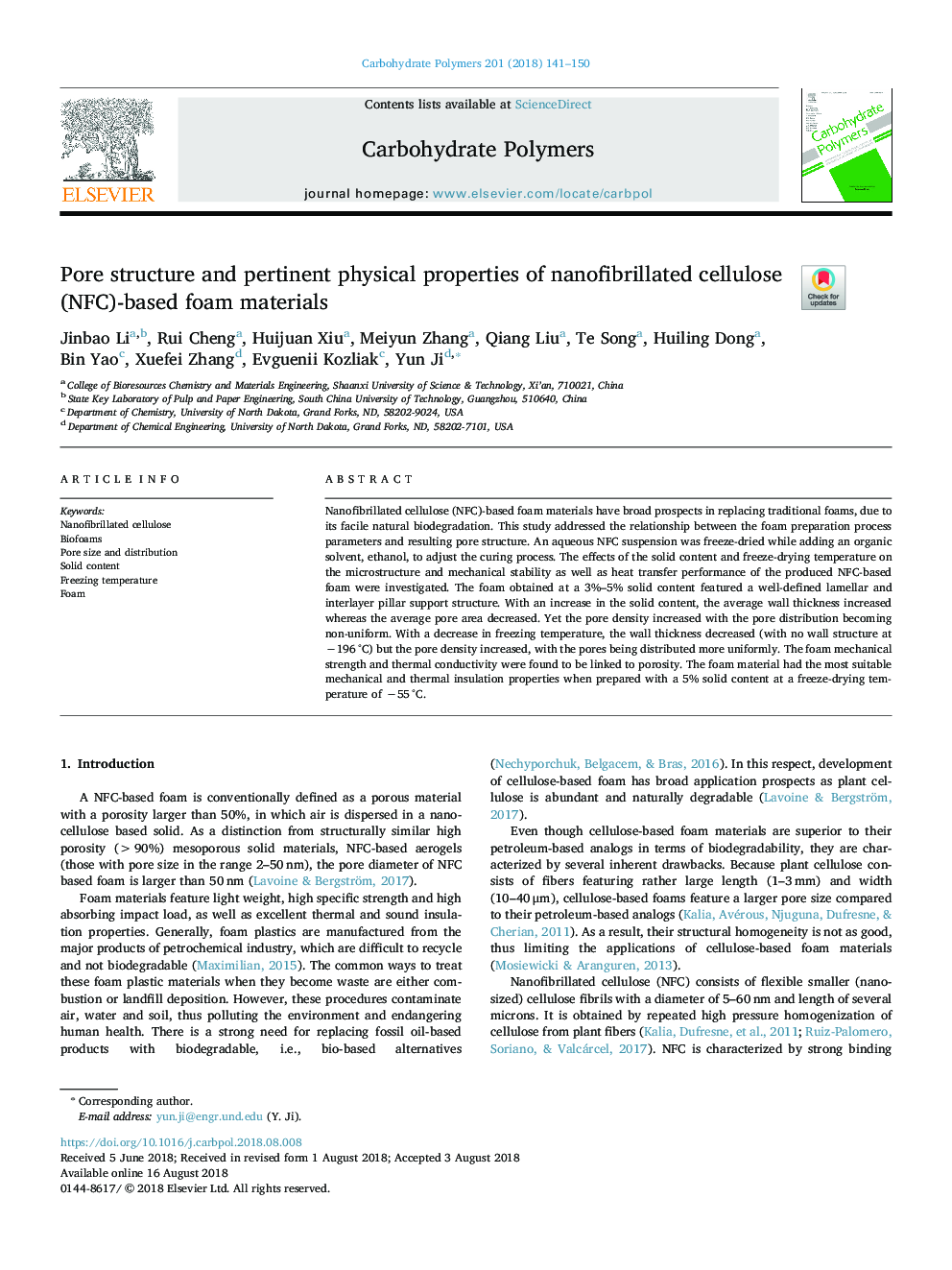| Article ID | Journal | Published Year | Pages | File Type |
|---|---|---|---|---|
| 8942938 | Carbohydrate Polymers | 2018 | 10 Pages |
Abstract
Nanofibrillated cellulose (NFC)-based foam materials have broad prospects in replacing traditional foams, due to its facile natural biodegradation. This study addressed the relationship between the foam preparation process parameters and resulting pore structure. An aqueous NFC suspension was freeze-dried while adding an organic solvent, ethanol, to adjust the curing process. The effects of the solid content and freeze-drying temperature on the microstructure and mechanical stability as well as heat transfer performance of the produced NFC-based foam were investigated. The foam obtained at a 3%-5% solid content featured a well-defined lamellar and interlayer pillar support structure. With an increase in the solid content, the average wall thickness increased whereas the average pore area decreased. Yet the pore density increased with the pore distribution becoming non-uniform. With a decrease in freezing temperature, the wall thickness decreased (with no wall structure at â196â°C) but the pore density increased, with the pores being distributed more uniformly. The foam mechanical strength and thermal conductivity were found to be linked to porosity. The foam material had the most suitable mechanical and thermal insulation properties when prepared with a 5% solid content at a freeze-drying temperature of â55â°C.
Related Topics
Physical Sciences and Engineering
Chemistry
Organic Chemistry
Authors
Jinbao Li, Rui Cheng, Huijuan Xiu, Meiyun Zhang, Qiang Liu, Te Song, Huiling Dong, Bin Yao, Xuefei Zhang, Evguenii Kozliak, Yun Ji,
